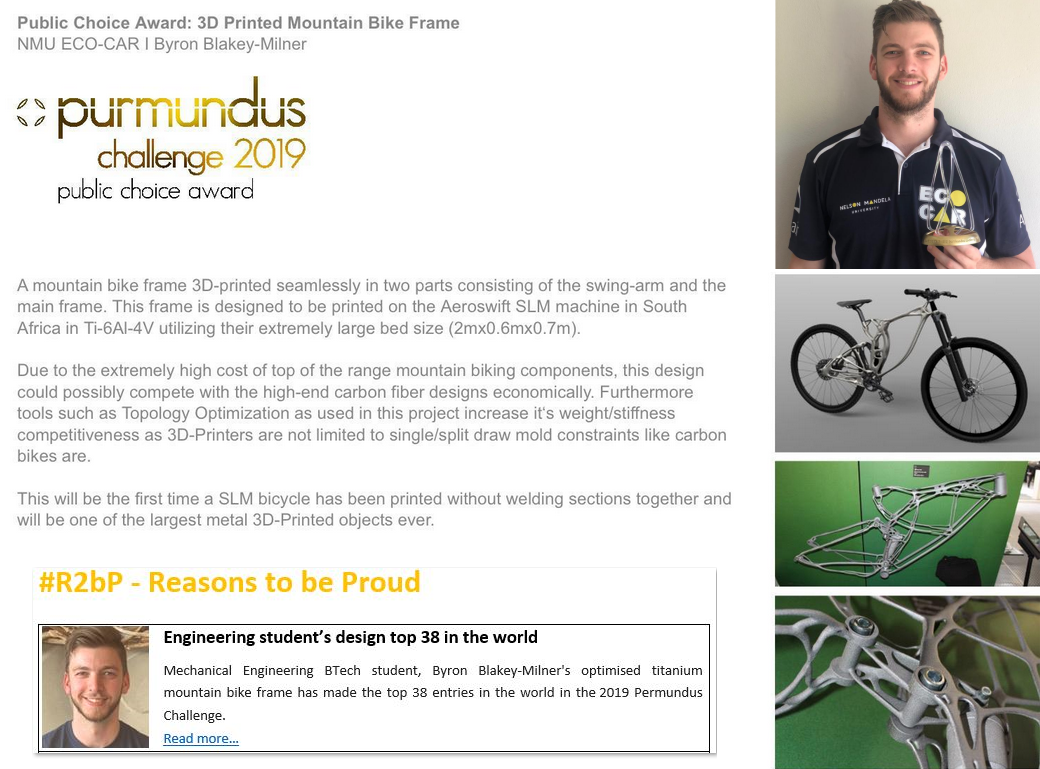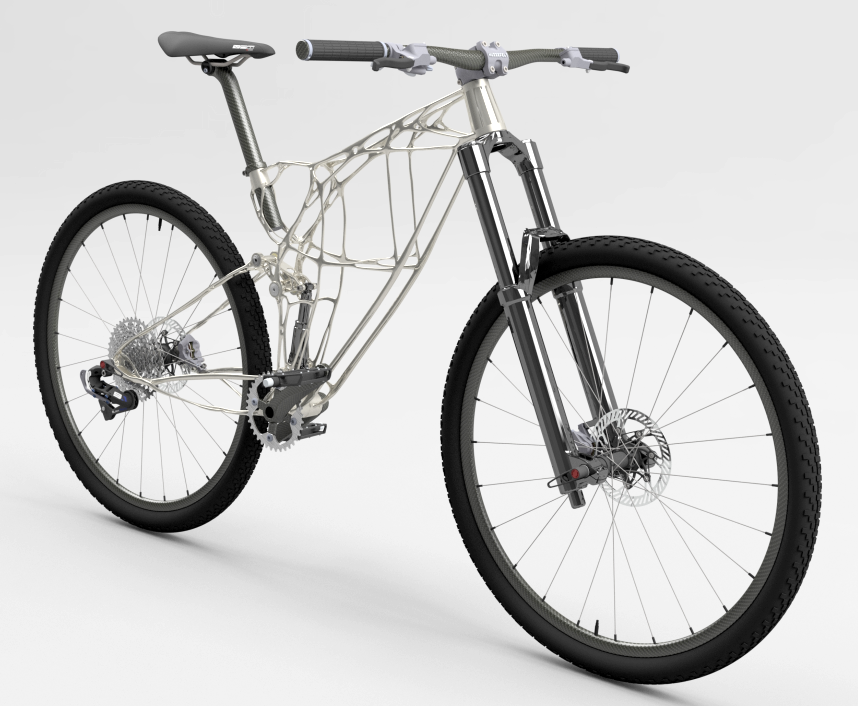This project was completed with the invaluable collaboration of
 and
and 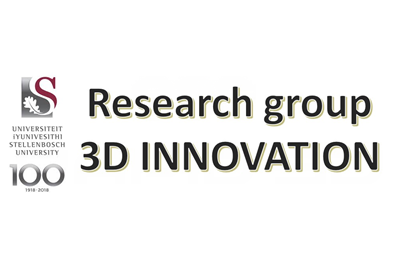
This was an exciting project that stemmed from the 2018 RAPDASA Conference as an idea, and was taken forward as an Honours year project in tandem with our collaborative partners, AKHANI3D and the 3DInnovation Lab, to get an end result which could hopefully be taken on to a production level down the line.
This project was aimed at very high-end Professional downhill MTB racers looking for very specific outcomes in a one-piece titanium AM frame and it was hoped to have the frame printed at AeroSwift in their large-scale 3D Printer until they ran into financial issues in the 2nd half of 2019.

The additive manufacturing field is growing rapidly, and new innovative markets need to be developed to possibly use these manufacturing constraints to their advantage. The cycling industry can closely relate, in cost, to common applications of high-end additive manufacturing, this and the fact that the largest metal 3D printer in the world (Aeroswift) was in close proximity in South Africa, a door for a large-scale Titanium printed project was proverbially opened.
The focus of the project was to design and manufacture a mountain bicycle frame using state of the art Additive Manufacturing techniques as a guide allowing for design using methods like topology optimization. Early in the project it was decided that the frame would be printed using Ti-6Al-4V on a DMLS machine with emphasis on a topology optimization design outcome. A first iteration was produced for simulation purposes as shown below.

The overall goals of the project was to be designed for manufacture according to relevant international standards, to be as light as possible to be competitive with similar competition bicycle frames, to have appealing aesthetics since the cycling community tends to support attractive designs, and at the same time keeping compliance to a minimum.
Mountain biking as a sport/hobby is a very interesting and diverse community of people. There are various disciplines but the high-end of all social and competitive mountain biking seems to head in one of two directions, either into the downhill/trail riding or the cross-country (XC) setup.
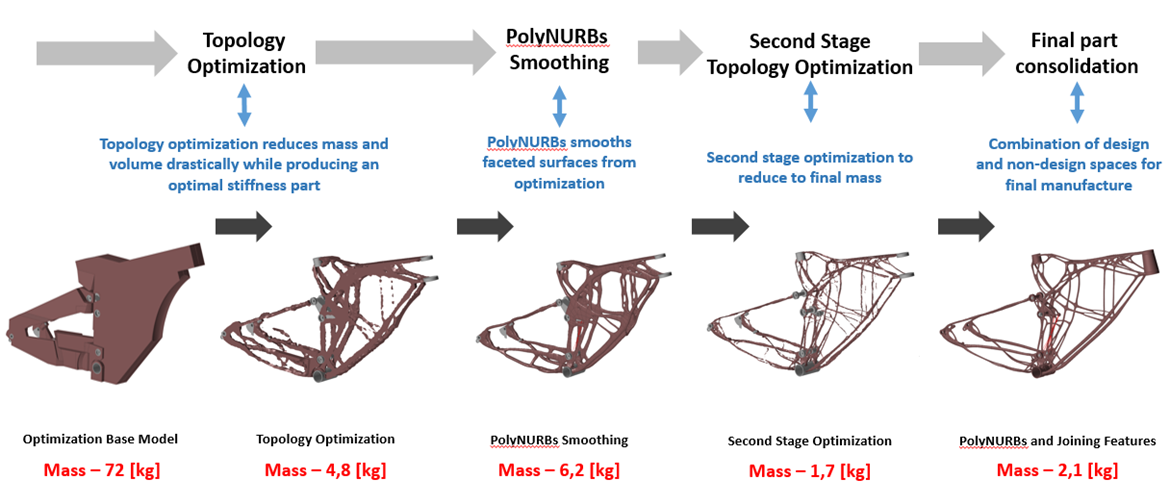
These two disciplines have a lot of very specific differences and the seemingly most applicable competitive space for topology optimization to improve on current designs is the XC category. This is mostly due to both the high stiffness requirements, and for the ultra-light-weighting commonly used in this practise, topology optimization is best suited to these constraints. The design developmental process is depicted above.
The Frame is designed as a “soft-tail” mountain bicycle which means it has both a front and rear shock absorber. The soft-tail variant splits the frame into two major parts: the swing-arm and the main frame, this was beneficial in the manufacturing design since metal printing is typically exponentially expensive as the build size is increased.
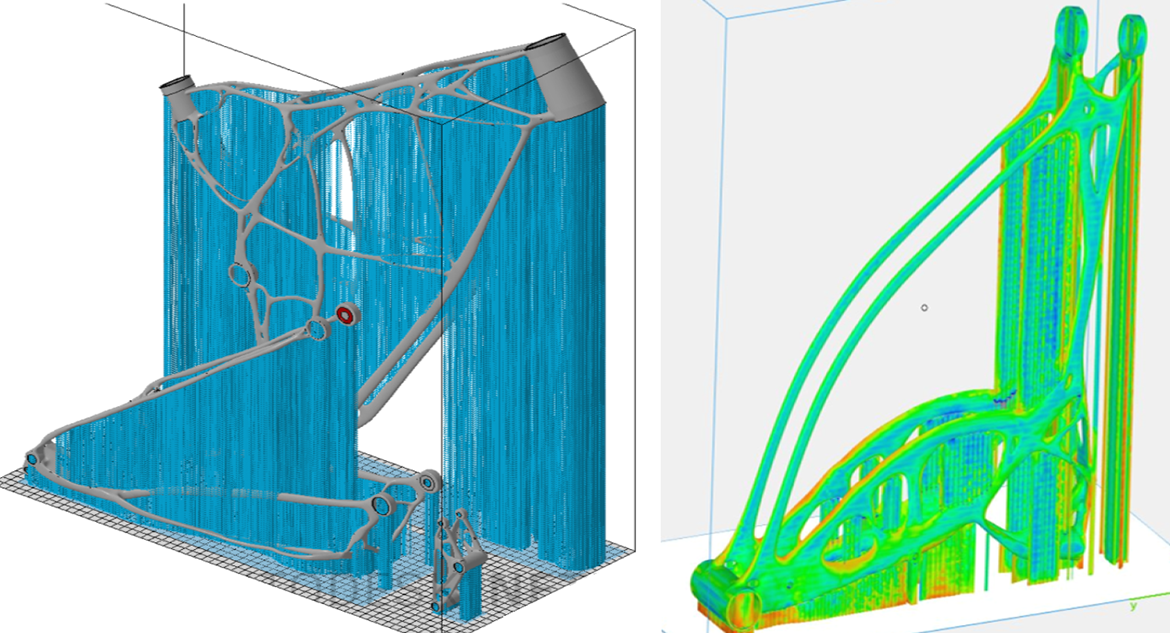
Using topology optimization, the design was conditioned to be as light and stiff as possible under specific design conditions. This has the added benefit of using additive manufacturing techniques with almost no manufacturing constraints such as split-draw moulds, voids, CNC constraints and many others. Additively manufactured parts can be built in any orientation with print direction being the only minor constraint but at the cost of additional support material produced.
At an envisaged weight of 2.1 kg, the bicycle frame will be one of the lightest titanium frames ever created for this purpose. It will also display higher stiffness and durability than products in its vicinity. The design is planned to be one of the largest metal 3D-Printed objects ever created and the first time a bicycle frame has been printed seamlessly in titanium.

As such, the AeroSwift printer was targeted as the ultimate test but due to multiple unforseen events & circumstances, this large-bed printer became unavailable in the latter part of 2019, and so alternative demo models were planned to ensure a physical outcome. It is hoped that the ultimate Titanium option will still be printed in the near future.
As a result, Akhani3D stepped forward and offered to print the mountain bike frame using a plastic SLM type 3D-printer for the purpose of a proof of concept and a demonstration piece for the various Conferences and Expos planned for the end of the year.
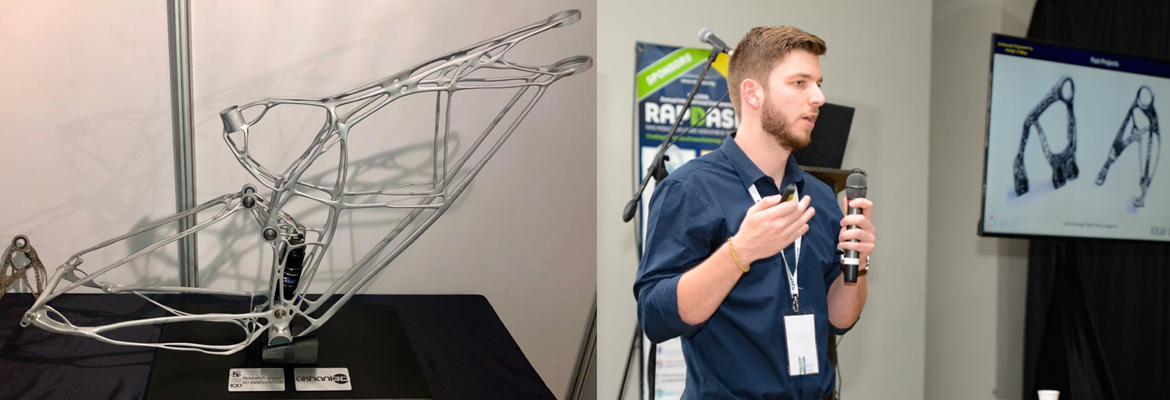
This was then used as a display model for the RAPDASA Additive Manufacturing Conference at which the designer Byron Blakey-Milner formally presented the project to various industry and academia related persons.
The display model was also then used for demo purposes at the Advanced Manufacturing and Composites Expo in Port Elizabeth where many peoples were able to view the design among the other outputs that the AEDG had produced this year.
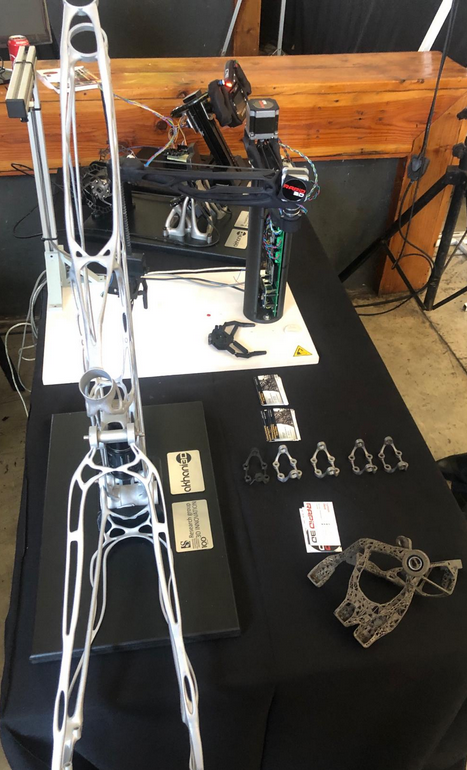
The mountain bike frame was also selected as a finalist in the Purmundus Challenge which is hosted by the largest Additive Manufacturing trade show in the world, FormNext which was held in Frankfurt, Germany.
Organisers of this challenge were interested in displaying the design at FormNext and agreed to print their own model in Germany for the conference. The design went on to win the Public Choice award at FormNext after some competitive judging. This project was the only design at FormNext which was a solely student project not related to research. Most of the other entrants to the competition were commercial entities. This was a major accolade for the team and for Byron who had done an outstanding job in the design.

